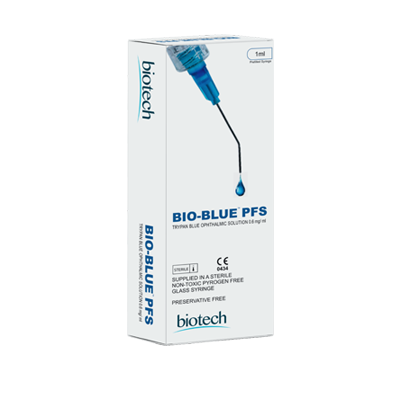DYEs
Quick Links
No products found in this company category.
What is DYES For DYES For Cataract Surgery?
DYES for cataract product range refer to specialized colorants or staining agents utilized during cataract surgery. DYES for cataract product range are pharmaceutical products designed to aid ophthalmologists in visualizing and distinguishing specific tissues within the eye during the surgical intervention.These dyes are formulated to be safe for intraocular use and are integral to modern cataract surgical techniques. These dyes are crucial components of the cataract product range.
What is The Function of DYES For Cataract Surgery?
The function of dyes for cataract product range is multifaceted. These dyes serve primarily to enhance the visualization of intraocular structures during cataract surgery. By selectively staining specific tissues or anatomical features within the eye, such as the anterior capsule or residual lens material, dyes enable surgeons to identify and navigate delicate structures with precision. This enhanced visualization facilitates safer and more effective cataract removal and intraocular lens implantation, ultimately improving surgical outcomes and patient satisfaction.
What are The Uses of DYES For Cataract Surgery
The uses of dyes for cataract product range primarily involve enhancing visualization during surgical procedures. Dyes aid in staining specific intraocular structures, facilitating their identification and removal. By providing high-contrast staining, dyes enable surgeons to perform precise maneuvers, including capsulorhexis and lens fragmentation.Additionally, dyes assist in the placement and centration of intraocular lenses, ensuring optimal positioning and visual outcomes for patients postoperatively.
How Many Types of DYES are there?
- Acid Dyes: Acid dyes are water-soluble dyes primarily used for protein-based fibers such as wool, silk, and nylon. These dyes form ionic bonds with the protein molecules in the fibers, resulting in vibrant and long-lasting colors. Acid dyes are versatile and offer a wide range of colors, making them suitable for various applications in the textile and medical industries.
- Vat Dyes: Vat dyes are insoluble in water and are primarily used for cellulose-based fibers such as cotton and linen. These dyes require a reduction process to become soluble and bind to the fibers. Vat dyes are known for their excellent color fastness and resistance to fading, making them suitable for applications where durability is essential.
- Synthetic Dyes: Synthetic dyes are organic compounds synthesized through chemical processes. These dyes offer a wide range of colors, shades, and properties, making them versatile for diverse applications in textiles, cosmetics, food, and medicine. Synthetic dyes are widely used in the cataract product range due to their predictable performance and availability in various formulations.
- Natural Dyes: Natural dyes are derived from plant, animal, or mineral sources and have been used since ancient times to impart color to textiles and other materials. Examples of natural dyes include indigo, cochineal, and turmeric. While natural dyes offer a sustainable and environmentally friendly alternative to synthetic dyes, they may exhibit variability in color intensity and stability.
- Reactive Dyes: Reactive dyes chemically react with specific components within the fibers, resulting in a covalent bond between the dye molecules and the fiber molecules. This chemical bonding process ensures excellent color fastness and wash resistance, making reactive dyes suitable for applications where durability is paramount. Reactive dyes are commonly used in the textile industry for dyeing cotton, wool, and silk fibers.
- Basic Dyes: Basic dyes are cationic dyes that form electrostatic bonds with the negatively charged sites on the fiber molecules. These dyes are commonly used for staining biological tissues and are employed in medical applications such as histology and ophthalmic surgery. Basic dyes offer high staining intensity and are particularly useful for enhancing contrast and visualization during surgical procedures such as cataract surgery.
What are The Benefits of DYES For Cataract Surgery?
The benefits of using dyes are significant:
- Enhanced visualization of intraocular structures, facilitated by dyes, ensures more precise surgical maneuvers, reducing the risk of intraoperative complications.
- Dyes facilitate the identification and removal of residual lens material, minimizing the likelihood of postoperative complications.
- Additionally, dyes contribute to the accurate placement and centration of intraocular lenses, ensuring optimal visual outcomes.
- Their versatility in complex surgical cases and ability to improve overall surgical precision lead to enhanced patient satisfaction and improved quality of vision postoperatively.
What are The Side Effects of DYES For Cataract Surgery?
The side effects of dyes for cataract product range are minimal but can include allergic reactions to dye components, transient elevation of intraocular pressure post-injection, and rare instances of ocular toxicity. Allergic reactions may manifest as ocular inflammation or systemic allergic responses. Transient elevation of intraocular pressure requires monitoring to prevent complications. Additionally, prolonged or excessive use of certain dyes may lead to ocular toxicity, although such occurrences are rare. While side effects are generally uncommon, it's crucial for surgeons and patients to be aware of potential risks associated with dye-assisted cataract surgery to ensure appropriate management and mitigate adverse outcomes.
What are The Advantages of DYES For Cataract Surgery?
- Enhanced Visualization: Dyes aid in staining specific intraocular structures, such as the anterior capsule and residual lens material, enhancing their visibility during surgery. This improved visualization enables surgeons to perform precise maneuvers and ensures thorough removal of cataracts.
- Precision Surgery: By providing high-contrast staining, dyes enable surgeons to identify and differentiate between target and non-target tissues with greater accuracy. This precision reduces the risk of intraoperative complications and improves the overall safety of the surgical procedure.
- Improved Surgical Outcomes: The use of dyes allows for more effective removal of cataracts and residual lens material, minimizing the risk of postoperative complications such as capsular opacification and inflammation. This results in better visual outcomes and faster recovery times for patients.
- Facilitated Intraocular Lens Placement: Dyes assist in the placement and centration of intraocular lenses, ensuring optimal positioning for improved visual acuity and reduced risk of complications such as decentration or dislocation.
- Flexibility in Surgical Approach: Dyes provide surgeons with greater flexibility in navigating challenging surgical cases, such as those involving dense cataracts or complex anatomical structures. This flexibility allows for customized surgical approaches tailored to individual patient needs.
Are What DYES do Safe?
Overall, dyes used in the cataract product range are considered safe when administered by experienced ophthalmic surgeons in appropriate concentrations and dosages. However, as with any medical intervention, there are inherent risks associated with their use. To mitigate these risks, surgeons must adhere to established protocols and guidelines regarding dye administration and intraocular surgery. Additionally, patients should undergo thorough preoperative evaluation to assess their suitability for dye-assisted cataract surgery and be informed of the potential risks and benefits associated with the procedure.
Categories
Company
Media
Follow Us
© Copyright Biotech /Terms Of Use - Privacy Policy
Version 2_CT_1212222

